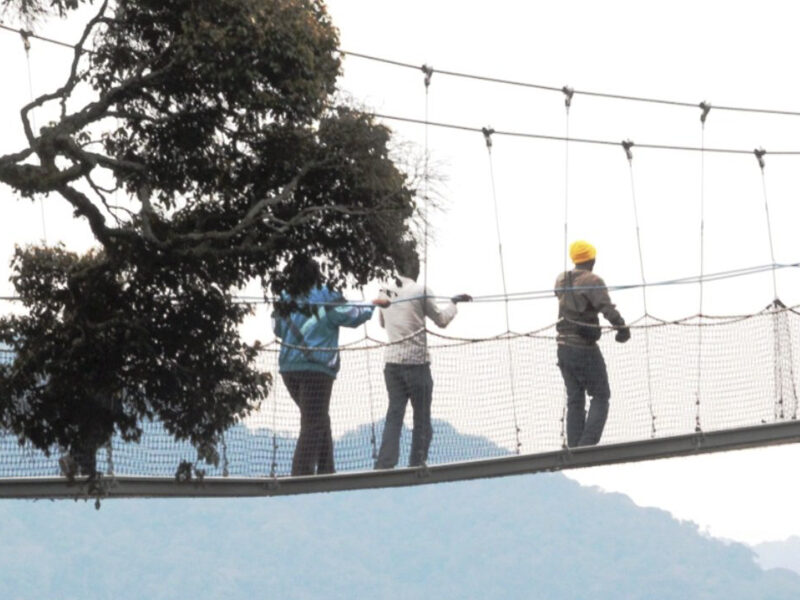3 Days Masai Mara Safari
500$
per personYou will spend the day in Masai Mara, Kenya’s most popular game sanctuary where you will have the best opportunity of spotting the Big Five-lion, leopard, buffalo, rhino and elephant.
You will spend the day in Masai Mara, Kenya’s most popular game sanctuary where you will have the best opportunity of spotting the Big Five-lion, leopard, buffalo, rhino and elephant.
-
DepartureTour startTour starts from Nairobi
-
Departure TimePlease arrive by 9:15 AM for a prompt departure at 9:30 AM.
-
Return TimeApproximately 8:30 PM.
-
Dress CodeCasual. Comfortable athletic clothing, hiking shoes, hat, light jacket.
-
Include
1
Day 1: Maasai Mara
After breakfast you will depart for Masai Mara. You will drive along the floor of the Rift Valley to Masai Mara arriving at the camp in the evening.
2
Day 2: Maasai Mara Game Drives
After breakfast you will spend the day in Masai Mara, Kenya’s most popular game sanctuary where you will have the best opportunity of spotting the Big Five-lion, leopard, buffalo, rhino and elephant. Game drives are flexible, with the option of going out with picnic lunch to spend entire day in the park. Dinner and overnight at the camp
3
Day 3: Nairobi
After breakfast you will go for another morning game drive in Masai Mara, and then depart for Nairobi with lunch enroute, arriving about 16:00hrs.
Tour Location
You will spend the day in Masai Mara, Kenya’s most popular game sanctuary where you will have the best opportunity of spotting the Big Five-lion, leopard, buffalo, rhino and elephant.
Kenya's history spans millions of years, with evidence of human habitation dating back to the Paleolithic era and the discovery of early hominid fossils in the Koobi Fora region. The Bantu expansion reached the area by the 1st millennium AD, and the region experienced interactions with Arabian and Asian traders along its Indian Ocean coast. British colonialism began in the early 20th century, with Kenya becoming a British colony between 1901 and 1960. Kenya achieved independence in 1963 and has since developed into a diverse nation with a rich history, diverse culture, and abundant wildlife.
Early History:
-
Paleolithic Era:Human habitation in the region dates back millions of years, with fossil evidence of hominids like Australopithecus boisei and Homo habilis discovered in the Koobi Fora area.
-
Bantu Expansion:The Bantu expansion from West Africa reached the area by the 1st millennium AD.
-
Swahili Coast:The Indian Ocean coast became an important trading center, with interactions between local populations and Arabian and Asian traders.
-
Pre-colonial Societies:Various indigenous communities, such as the Kikuyu, Luo, and Maasai, developed their own distinct cultures and societies.
Colonial Era:
-
British Colonization:British settlers began arriving in the late 19th and early 20th centuries, attracted by the region's resources and climate.
-
Forced Labor and Displacement:Indigenous peoples were often forced to work on European-owned farms and plantations or were relocated to less fertile land.
-
Development of Infrastructure:The British built railways and other infrastructure to facilitate resource extraction and trade.
-
Mau Mau Uprising:The Mau Mau Rebellion, a resistance movement against British colonial rule, occurred between 1952 and 1956.
Post-Colonial Era:
-
Independence (1963):Kenya gained independence from British rule, becoming a republic.
-
Development and Challenges:Kenya has experienced significant economic and political development, but has also faced challenges such as political instability, corruption, and ethnic tensions.
-
Multi-Party Democracy:Kenya transitioned to a multi-party democracy in the 1990s, though challenges to its democratic institutions remain.
-
Wildlife and Tourism:Kenya's rich wildlife and diverse landscapes have made it a major tourist destination, contributing significantly to the economy.
Write a Review
Mara Sarova Lodge




